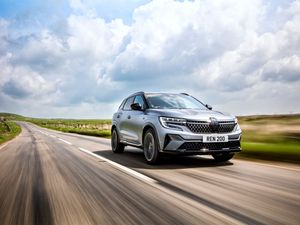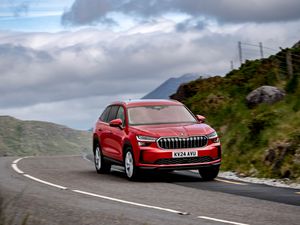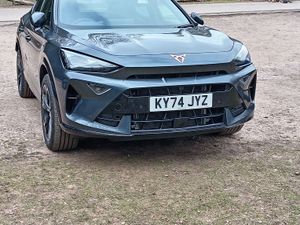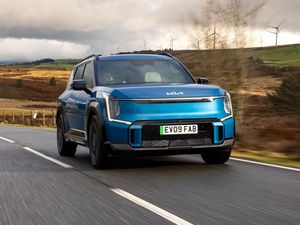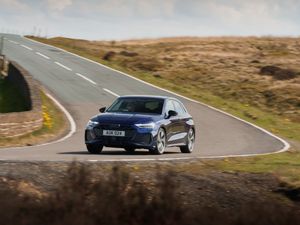First Drive: Toyota Proace Verso Electric offers EV transport for up to nine
For those who need to carry many people in a vehicle powered by electricity. James Batchelor tries Toyota’s nine-seater people-mover.

What is it?

The Proace is Toyota’s mid-sized van, and if it looks a little familiar then that’s because it shares rather a lot of its componentry with Stellantis vans from Peugeot, Citroen, Vauxhall and Fiat. The Proace, along with its smaller and larger siblings, are the result of a partnership between the two giant carmakers, meaning owners get tried and tested technology backed up by the Japanese brand’s fantastic customer service.
What’s new?

Just like the car market, the van world is quickly adapting to the need to launch more electric-powered models. Until earlier this year, Toyota could sell you a diesel powered Proace Verso. But the requirement to sell more zero-emission vehicles has kicked in when it comes to this practical van, as Toyota has recently made the decision to axe the derv. So now it’s electric only, making the Proace Verso (along with its Stellantis sisters) one of a few, but growing range of people carriers powered by electricity.
What’s under the bonnet?

Instead of 1.5- and 2.0-litre diesels, you’ll find a 134bhp electric motor powering the front wheels. This is fed by a 50kWh battery pack – the same size used in a variety of Stellantis models such as the E-208 supermini. Toyota claims you’ll be able to cover 143 miles before needing to top up its battery, and thanks to 100kW charging capability a 10 to 80% recharge takes less than 30 minutes. The battery pack is neatly located under the van’s floor, meaning there’s no impact on space inside.
As this review went to print, Toyota announced a facelifted model sporting a larger 75kWh battery pack for a claimed 214-mile range.
What’s it like to drive?

Diesel power and large vans with many seats on board go hand in hand, but we were pleasantly surprised at how relaxing the Proace Verso is to drive. It’s easy to get a comfortable driving position, and the high-mounted seats give a fantastic view of the road. The absence of a growly diesel engine under the bonnet makes for a far more refined driving experience, while the ride is nicely supple – the Proace Verso shrugs off potholes and speed humps with ease.
Three different driving modes – Eco, Normal and Sport – either restrict the electric motor’s power to eke out the range or unlock power for more speed. The latter is particularly useful when fully loaded, but whatever the driving mode the Proace Verso feels quick enough thanks to the motor’s ability to deploy its torque immediately. The steering is light and accurate, and unlike in some electric vans, the brake pedal feels natural despite being regenerative.
The claimed 143-mile range is doable when driving with limited passengers on board, but fill the van to its capacity like we did and that range is more like 100 miles in warm weather.
How does it look?

Naturally, a van is never going to turn heads down London’s King’s Road, but with its flashes of chrome on the grille and smart alloy-like plastic wheel covers, there’s a neatness to the styling. Toyota has done quite a good job at making the Proace Verso look different from other Stellantis models, and despite the shared basic body shell, the Toyota’s corporate look works well. The forthcoming facelifted model wears a very different design, adopting a look more akin to Toyota’s recent electric cars.
What’s it like inside?

Verso is a name that has traditionally been used on Toyota’s more practical models, and with the Proace the Verso name is well matched. It comes in two different wheelbases – the smaller L1 measures 4,933mm, while the longer L2 maxes things out to 5,333mm – and there’s the choice of seven-, eight- and nine-seat configurations. In long L2 nine-seater spec, like our test vehicle, there’s tons of space, but the only real benefit of going for the L2 model is if you need room to carry the luggage of those nine people onboard as it has more boot space.
Interior quality is perfectly fine for this type of vehicle. The dashboard is covered in hard, durable plastics, but it’s nicely designed. The new facelifted model brings a redesigned dashboard.
What’s the spec like?

Our test van was in Shuttle spec and, as the name implies, it’s designed to ferry people around with the minimum of fuss. Therefore the seats are trimmed in hard-wearing fabric and the flooring is equally hard – there are no carpets. That said, an air conditioning panel that stretches from the front to the rear of the vehicle with temperature controls and vents boosts the comfort levels.
A seven-inch touchscreen sits neatly within the dashboard, and it has wired Apple CarPlay and Android Auto functionality, along with built-in sat-nav. For the refreshed version, Toyota is expected to add more models designed for families and VIP business transport.
Verdict
With a 50kWh battery pack and a range of between 100 and 140 miles in everyday driving, the Proace Verso may be adequate for large families looking for EV transport. But as a vehicle for shorter journeys, private hire or hotel transfers, the Proace Verso really does impress. The forthcoming updated model with its longer range will increase the Proace Verso’s flexibility, but regardless, it’s a quiet and comfortable to drive people-mover that could be ideal for families and businesses with specific needs.

